ATTRACTIONS
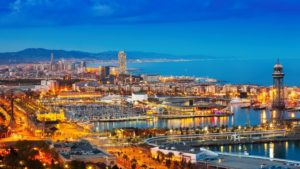 Barcelona Barcelona is an internationally renowned tourist destination, with numerous recreational areas, the best beaches in the world, a mild and warm climate, historical monuments, including eight UNESCO World Heritage Sites, magnificent hotels, and a well-developed tourist infrastructure. Minor basilica of Sagrada Familia, is the symbol of Barcelona. With its Rambles, Barcelona is ranked the most popular city to visit in Spain. Take a walk to the center of the old city of Barcelona, Barri Gotic, it encompasses the remains of the city’s Roman wall and several notable landmarks. It’s exciting and daunting to take a step back and reflect on the history from medieval times. If you are a Barca fan, the FC Barcelona Museum is a must see. It has three sections with a 3D cinema, audiovisual touch-screen, and information on the history of Barca. The striking escarpment of Montjuic overlooks the harbour and is topped by Montjuic Castle. The area is home to several sporting and cultural venues, as well as Barcelona’s biggest park and gardens. Barcelona is known for its maritime Mediterranean climate with warm to hot summers. Taking a swim or a quick dip in the sea is the best way to cool off. Of Barcelona’s beaches, Barceloneta and Somorrostro are the largest, oldest and the most-frequented.
Barcelona Barcelona is an internationally renowned tourist destination, with numerous recreational areas, the best beaches in the world, a mild and warm climate, historical monuments, including eight UNESCO World Heritage Sites, magnificent hotels, and a well-developed tourist infrastructure. Minor basilica of Sagrada Familia, is the symbol of Barcelona. With its Rambles, Barcelona is ranked the most popular city to visit in Spain. Take a walk to the center of the old city of Barcelona, Barri Gotic, it encompasses the remains of the city’s Roman wall and several notable landmarks. It’s exciting and daunting to take a step back and reflect on the history from medieval times. If you are a Barca fan, the FC Barcelona Museum is a must see. It has three sections with a 3D cinema, audiovisual touch-screen, and information on the history of Barca. The striking escarpment of Montjuic overlooks the harbour and is topped by Montjuic Castle. The area is home to several sporting and cultural venues, as well as Barcelona’s biggest park and gardens. Barcelona is known for its maritime Mediterranean climate with warm to hot summers. Taking a swim or a quick dip in the sea is the best way to cool off. Of Barcelona’s beaches, Barceloneta and Somorrostro are the largest, oldest and the most-frequented.
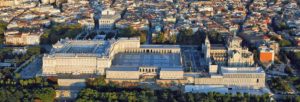 Madrid is the capital of Spain. It was the fourth most-visited city in Europe and the first in Spain, with almost seven million tourists a year. Cybele Palace and her fountain has become symbolic monument of the city. The Plaza Mayor is a major public space in the heart of Madrid. It was once the center of the old Madrid characterized by its symmetry and austerity. The Plaza is for the people of Madrid and tourists to shop, walk around, eat, and enjoy the outdoors. In the center of the square stands the bronze statue of King Philip III on a horse, as a centerpiece that adds highlights to the plaza. You can relax and sit at an outdoor table with a cup of coffee while observing the whole scenery of the square. Madrid is home to La Liga football club giant Real Madrid. Whether you’re a supporter or not, the Real Madrid is the most successful club in the world with a record of 26 international titles. Madrid is the European city with the highest number of trees, with Casa de Campo serving as the city’s green lung. With an area of more than 1,700 hectares it is an enormous urban parkland and the largest in Spain. Home to a fairground, the Madrid Zoo, an amusement park, the Parque de Atracciones de Madrid, and an outdoor municipal pool, a bird’s-eye view of the park and city are available via cable car. The nightlife in Madrid is one of the city’s main attractions with tapas bars, clubs, jazz lounges, live music venues and flamenco theaters.
Madrid is the capital of Spain. It was the fourth most-visited city in Europe and the first in Spain, with almost seven million tourists a year. Cybele Palace and her fountain has become symbolic monument of the city. The Plaza Mayor is a major public space in the heart of Madrid. It was once the center of the old Madrid characterized by its symmetry and austerity. The Plaza is for the people of Madrid and tourists to shop, walk around, eat, and enjoy the outdoors. In the center of the square stands the bronze statue of King Philip III on a horse, as a centerpiece that adds highlights to the plaza. You can relax and sit at an outdoor table with a cup of coffee while observing the whole scenery of the square. Madrid is home to La Liga football club giant Real Madrid. Whether you’re a supporter or not, the Real Madrid is the most successful club in the world with a record of 26 international titles. Madrid is the European city with the highest number of trees, with Casa de Campo serving as the city’s green lung. With an area of more than 1,700 hectares it is an enormous urban parkland and the largest in Spain. Home to a fairground, the Madrid Zoo, an amusement park, the Parque de Atracciones de Madrid, and an outdoor municipal pool, a bird’s-eye view of the park and city are available via cable car. The nightlife in Madrid is one of the city’s main attractions with tapas bars, clubs, jazz lounges, live music venues and flamenco theaters.
 La Sagrada Familia Sagrada Familia is an architectural gem in Barcelona’s sprawling skyline and is the most visited monument in Spain. It is a large, unfinished, Roman Catholic church in Barcelona. Designed by Catalan architect Antoni Gaudi, combining Gothic and art-nouveau sentiment, at the time of his death less than a quarter of the project was complete. Advancements in technologies such as computer aided design and numerical control have since enabled faster progress. Some of the project’s greatest challenges remain, including the construction of ten more spires, each symbolizing an important Biblical figure in the New Testament. Gaudi’s original design calls for a total of eighteen spires, representing in ascending order of height the Twelve Apostles, the Virgin Mary, the four Evangelists and, tallest of all, Jesus Christ. Eight spires have been built as of 2010, corresponding to four apostles at the Nativity and four apostles at the Passion facade. The completion of the spires will make Sagrada Familia the tallest church building in the world. The building’s distinctive silhouette has nevertheless become symbolic of Barcelona itself, drawing an estimated 2.5 million visitors annually.
La Sagrada Familia Sagrada Familia is an architectural gem in Barcelona’s sprawling skyline and is the most visited monument in Spain. It is a large, unfinished, Roman Catholic church in Barcelona. Designed by Catalan architect Antoni Gaudi, combining Gothic and art-nouveau sentiment, at the time of his death less than a quarter of the project was complete. Advancements in technologies such as computer aided design and numerical control have since enabled faster progress. Some of the project’s greatest challenges remain, including the construction of ten more spires, each symbolizing an important Biblical figure in the New Testament. Gaudi’s original design calls for a total of eighteen spires, representing in ascending order of height the Twelve Apostles, the Virgin Mary, the four Evangelists and, tallest of all, Jesus Christ. Eight spires have been built as of 2010, corresponding to four apostles at the Nativity and four apostles at the Passion facade. The completion of the spires will make Sagrada Familia the tallest church building in the world. The building’s distinctive silhouette has nevertheless become symbolic of Barcelona itself, drawing an estimated 2.5 million visitors annually.
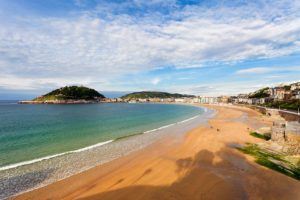 Because of the Spain’s warm climate you may find yourself spending much of your time out enjoying the sand. La Concha Beach of San Sebastian tops it all. Its crescent shape is remarkably beautiful, the soft white sand, the blue water that glitters as the sun touches its surface and the ravishing green mountains on the opposite sides add quality to the scenic view of the beach. The Paseo Nuevo promenade runs the length of La Concha. The picturesque setting in the Bay and the elegance of fashionable seaside resorts have made the site a favorite. Frequently cited as one of the most beautiful and the most famous urban beaches in Europe, the water is tranquil due to the presence of mountains that protect against strong winds. Walking the coastline, sunbathing, swimming, and paddling are favorites.
Because of the Spain’s warm climate you may find yourself spending much of your time out enjoying the sand. La Concha Beach of San Sebastian tops it all. Its crescent shape is remarkably beautiful, the soft white sand, the blue water that glitters as the sun touches its surface and the ravishing green mountains on the opposite sides add quality to the scenic view of the beach. The Paseo Nuevo promenade runs the length of La Concha. The picturesque setting in the Bay and the elegance of fashionable seaside resorts have made the site a favorite. Frequently cited as one of the most beautiful and the most famous urban beaches in Europe, the water is tranquil due to the presence of mountains that protect against strong winds. Walking the coastline, sunbathing, swimming, and paddling are favorites.
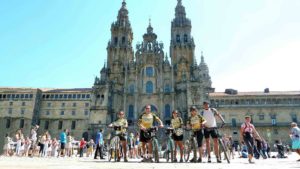 To get a real feel for Spain, you’ve got to cover some ground. The most fascinating walk is Europe’s iconic Pilgrimage Trail. The Camino de Santiago unites different pilgrims around the world as they walk through the Spanish countryside. The people, the food, the past and present on all sides, you reach eventually reach the shrine of the apostle Saint James the Great in the cathedral of Santiago de Compostela. Many follow its routes as a form of spiritual path or retreat. Most travel by foot, some by bicycle, and a few travel on horseback or donkey. In addition to those undertaking a religious pilgrimage, many hikers walk the route for travel or sport.
To get a real feel for Spain, you’ve got to cover some ground. The most fascinating walk is Europe’s iconic Pilgrimage Trail. The Camino de Santiago unites different pilgrims around the world as they walk through the Spanish countryside. The people, the food, the past and present on all sides, you reach eventually reach the shrine of the apostle Saint James the Great in the cathedral of Santiago de Compostela. Many follow its routes as a form of spiritual path or retreat. Most travel by foot, some by bicycle, and a few travel on horseback or donkey. In addition to those undertaking a religious pilgrimage, many hikers walk the route for travel or sport.
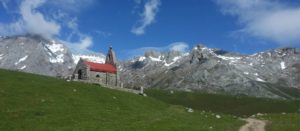 The Spain’s best kept secret, Picos de Europa, is another hidden gem. A mountain range extending 20 km and forming part of the Cantabrian Mountains in northern Spain, the range consists of three major massifs separated by a deep gorge. Limestone rock carved by glacial action has created an impressive area of alpine karst. The Picos de Europa is a wonderful setting for hiking, mountain climbing, wildlife, rock climbing and caving.
The Spain’s best kept secret, Picos de Europa, is another hidden gem. A mountain range extending 20 km and forming part of the Cantabrian Mountains in northern Spain, the range consists of three major massifs separated by a deep gorge. Limestone rock carved by glacial action has created an impressive area of alpine karst. The Picos de Europa is a wonderful setting for hiking, mountain climbing, wildlife, rock climbing and caving.
THE PEOPLE
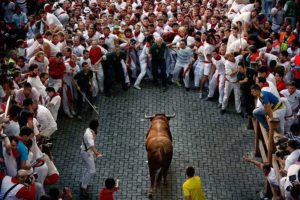 Spanish culture is marked by strong historic ties to Catholicism, which played a pivotal role in the country’s formation and subsequent identity. An important Spanish holiday is “Semana Santa”(Holy Week), that attracts thousands of pilgrims and tourists alike. For centuries, Holy Week has carried special significance in the church calendar. On Good Friday the streets become the stage for solemn processions and celebrations that lead to the festivities of Easter Sunday. Despite falling church attendance, Easter processions are expanding. Spaniards also hold celebrations to honor their local saints in churches, cities, towns and villages. The people decorate the streets, build bonfires, set off fireworks and hold large parades, bullfights, and beauty contests. One of the best known Spanish celebrations is the festival of “San Fermin,” which is celebrated every year in July in Pamplona. Bulls are released into the streets, while people run ahead of the animals to the bullring.
Spanish culture is marked by strong historic ties to Catholicism, which played a pivotal role in the country’s formation and subsequent identity. An important Spanish holiday is “Semana Santa”(Holy Week), that attracts thousands of pilgrims and tourists alike. For centuries, Holy Week has carried special significance in the church calendar. On Good Friday the streets become the stage for solemn processions and celebrations that lead to the festivities of Easter Sunday. Despite falling church attendance, Easter processions are expanding. Spaniards also hold celebrations to honor their local saints in churches, cities, towns and villages. The people decorate the streets, build bonfires, set off fireworks and hold large parades, bullfights, and beauty contests. One of the best known Spanish celebrations is the festival of “San Fermin,” which is celebrated every year in July in Pamplona. Bulls are released into the streets, while people run ahead of the animals to the bullring.